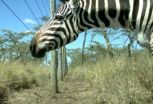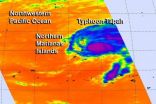(Press-News.org) COLUMBIA, Mo. – According to the Centers for Disease Control and Prevention (CDC), 69 percent of adults in the United States are currently overweight or obese, which puts these individuals at increased risk for chronic health problems. Although weight loss decreases this risk, statistics show that dieters often fail multiple times before meeting their goals. Now, MU researchers have found that information technology, such as smartphone applications, can help dieters integrate healthy behavior changes into their daily lives.
"Current weight loss recommendations are essentially the same as they were decades ago, but each generation has to learn how to manage modern challenges to healthy living," said Cheryl Shigaki, an associate professor in the MU School of Health Professions. "Information technology repackages traditional weight loss strategies and provides new tools, such as exercise logs and nutritional databases, to implement that knowledge."
According to Shigaki, prior research on weight loss programming has shown that social and informational supports are important for individuals' dieting success, along with learning skills for self-management, problem-solving and behavior change. Smartphone apps can increase access to information, and people generally are willing to explore many different weight loss applications, Shigaki said. Although use of those apps may increase participants' engagement and persistence, individuals still must practice accountability for their health behaviors to succeed, Shigaki said.
"When people use information technology to support their weight-loss efforts, they tend to access features that streamline the tracking of daily health behaviors, such as caloric intake and exercise, or that provide visual feedback on their overall progress, like graphs showing weight lost over time," Shigaki said. "Self-monitoring is key to successful weight loss, and information technology can make these tasks more convenient. We also found that people really liked getting feedback on their progress, which motivated them and helped them better evaluate their health behaviors and plan for future success."
Shigaki also studied individuals' perceptions of IT-based social support during weight loss programs and found that in-person social support was overwhelmingly preferred to creating new, online social networks based on common interests in wellness. She recommends that community health initiatives, such as workplace wellness programs, incorporate existing wellness apps to streamline behavior tracking while encouraging and enhancing in-person social support that information technologies cannot replace.
"People value workplace support, but companies probably should not attempt to develop their own social networking portals, which already exist and may not provide added value," Shigaki said. "They can get expensive very quickly. Organizations do not need to 'reinvent the wheel' when wellness programs can take advantage of information technologies consumers already use."
Shigaki's study, "Successful weight loss: how information technology is used to lose," was recently published in the Journal of Telemedicine and e-Health. Article co-authors include Richelle Koopman, from the MU Department of Family and Community Medicine; Allison Kabel, from the MU School of Health Professions; and Shannon Canfield, from the MU Center for Health Policy. The study was funded by the Small Grant Funding Program of the MU Department of Family and Community Medicine and the Research Facilitation Fund Program of the MU School of Health Professions.
INFORMATION:
Information technology can simplify weight-loss efforts; social support still important for success
2014-04-29
ELSE PRESS RELEASES FROM THIS DATE:
Immunogenic mutations in tumor genomes correlate with increased patient survival
2014-04-29
April 29, 2014 – Developing immunotherapies for cancer is challenging because of significant variability among tumors and diversity in human immune types. In a study published online today in Genome Research, researchers examined the largest collection of tumor samples to date to predict patient-specific tumor mutations that may activate the patient's immune system, paving the way for more successful, personalized cancer immunotherapy.
Tumor cells accrue mutations in their DNA, and as these mutations accumulate, the cell looks less and less like part of the body and more ...
Vitamin D may raise survival rates among cancer patients
2014-04-29
Washington, DC—Cancer patients who have higher levels of vitamin D when they are diagnosed tend to have better survival rates and remain in remission longer than patients who are vitamin D-deficient, according to a new study published in the Endocrine Society's Journal of Clinical Endocrinology & Metabolism (JCEM).
The body naturally produces vitamin D after exposure to sunlight and absorbs it from certain foods. In addition to helping the body absorb the calcium and phosphorus needed for healthy bones, vitamin D affects a variety of biological processes by binding to ...
Study: WHO tool underestimates need for osteoporosis treatment
2014-04-29
Washington, DC—The World Health Organization's tool for assessing bone fracture risk underestimates the true dangers for people who are younger than 65 or have been treated for a single broken bone, according to a new study published in the Endocrine Society's Journal of Clinical Endocrinology & Metabolism (JCEM).
A WHO task force developed the Fracture Risk Assessment Tool (FRAX) to help predict the likelihood of adults between the ages of 40 and 90 breaking a bone. FRAX is designed to evaluate the chances that a person will break a bone in a minor fall, which is called ...
Declines in large wildlife lead to increases in disease risk
2014-04-29
In the Middle Ages, fleas carried by rats were responsible for spreading the Black Plague. Today in East Africa, they remain important vectors of plague and many other diseases, including Bartonellosis, a potentially dangerous human pathogen.
Research by Hillary Young, assistant professor in UC Santa Barbara's Department of Ecology, Evolution and Marine Biology, directly links large wildlife decline to an increased risk of human disease via changes in rodent populations. The findings appear today in the Proceedings of the National Academy of Sciences Early Online Edition.
With ...
Chronic stress heightens vulnerability to diet-related metabolic risk
2014-04-29
New research out of UC San Francisco is the first to demonstrate that highly stressed people who eat a lot of high-fat, high-sugar food are more prone to health risks than low-stress people who eat the same amount of unhealthy food.
"Chronic stress can play an important role in influencing biology, and it's critical to understand the exact pathways through which it works." said Kirstin Aschbacher, PhD, an assistant professor in the UCSF Department of Psychiatry and lead author. "Many people think a calorie is a calorie, but this study suggests that two women who eat the ...
GWAS study ties ABCC9 anomalies, sulfonylurea exposure to HS-Aging
2014-04-29
LEXINGTON, Ky. (April 29, 2014) -- A genome-wide association study (GWAS) led by Peter Nelson, MD, PhD, of the Sanders-Brown Center on Aging at the University of Kentucky, and David Fardo, PhD, of UK's Department of Biostatistics, has provided new insight into Hippocampal Sclerosis of Aging (HS-A), a common disease affecting the elderly.
Researchers from 16 different institutions compared 363 persons with autopsy-proven HS-A to a control group of 2,303 other individuals in an attempt to identify genetic predisposition to HS-Aging.
Dr. Nelson and his team found that ...
Carnegie Mellon-Disney researcher invents 3-D printing technique for making cuddly stuff
2014-04-29
PITTSBURGH—Soft and cuddly aren't words used to describe the plastic or metal things typically produced by today's 3D printers. But a new type of printer developed by Carnegie Mellon University and Disney Research Pittsburgh can turn wool and wool blend yarns into fabric objects that people might actually enjoy touching.
The device looks something like a cross between a 3D printer and a sewing machine and produces 3D objects made of a form of loose felt. Scott Hudson, a professor in CMU's Human-Computer Interaction Institute who developed the felting printer with Disney ...
Beyond graphene: Controlling properties of 2-D materials
2014-04-29
The isolation of graphene at the University in 2004 led to the discovery of many other 2D crystals. While graphene has an unrivalled set of superlatives, these crystals cover a large range of properties: from the most conductive to isolating, from transparent to optically active.
The next step is to combine several of these crystals in a 3D stack. This way, one can create 'heterostructures' with novel functionalities – capable of delivering applications as yet beyond the imagination of scientists and commercial partners.
The first examples of such heterostructures already ...
Scripps Florida scientists reveal molecular secrets behind resveratrol's health benefits
2014-04-29
JUPITER, FL, April 29, 2014 – Resveratrol has been much in the news as the component of grapes and red wine associated with reducing "bad cholesterol," heart disease and some types of cancer. Also found in blueberries, cranberries, mulberries, peanuts and pistachios, resveratrol is associated with beneficial health effects in aging, inflammation and metabolism.
Scientists from the Florida campus of The Scripps Research Institute (TSRI) have now identified one of the molecular pathways that resveratrol uses to achieve its beneficial action. They found that resveratrol ...
Tapah through infrared satellite eyes: Now a typhoon
2014-04-29
Tropical Storm Tapah strengthened since April 28 and early on April 29, the storm reached typhoon strength. From its orbit in space, NASA's Aqua satellite zoomed over Tapah and the AIRS instrument captured infrared data on the storm that showed the location of its strongest thunderstorms.
The U.S. National Weather Service in Guam noted that a tropical storm warning and a typhoon watch continues for Alamagan and Pagan. For details on the advisory, visit: http://www.prh.noaa.gov/data/GUM/HLSPQ1
The Atmospheric Infrared Sounder (AIRS) instrument that flies aboard NASA's ...



